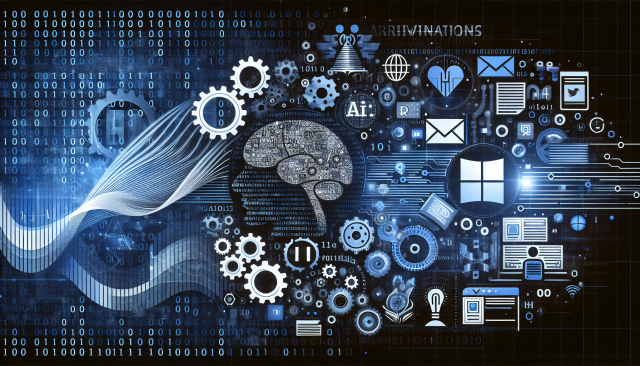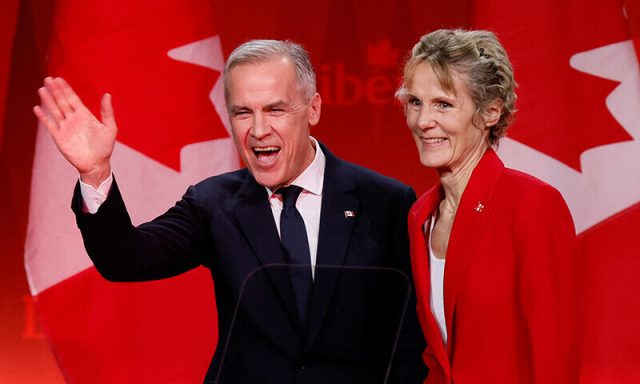This week, a sweeping executive order signed by President Donald Trump set off renewed debates over the future of U.S. higher education. The order targets a range of long-standing practices — from diversity, equity, and inclusion (DEI) programs to university accreditation and foreign funding disclosures — while simultaneously laying out new plans to invest in artificial intelligence education and boost retention at historically Black colleges and universities (HBCUs).
Reactions have been swift and polarized. Supporters hail the move as a return to “meritocracy” and ideological neutrality in education. Critics call it an unprecedented government overreach that threatens both academic freedom and institutional inclusion.
But amid this ideological clash, a deeper question lingers:
How do we measure whether a system — or a policy — is genuinely equipping people to thrive in a changing world?
At a time when technology, economics, and geopolitics are reshaping how we learn, work, and lead, it’s no longer enough to evaluate policies based solely on tradition, intent, or ideology. We need a more adaptive, data-driven framework — one that accounts not just for static values, but for human potential in dynamic, real-world environments.
That’s where HAPI — the Human Adaptability and Potential Index — comes in.
📈 What Is HAPI?
HAPI is a new model designed to assess how well individuals, organizations, and systems respond to change, complexity, and opportunity. In essence, it asks:
- How quickly can you learn?
- How well can you regulate emotion under stress?
- Are you able to change your behaviors in response to new environments?
- Can you collaborate across differences?
- And ultimately, do you have the capacity to grow into what the future demands?
By examining adaptability across five core dimensions — Cognitive, Emotional, Behavioral, Social Adaptability, and Growth Potential — HAPI provides a holistic, evidence-based way to measure how ready someone (or something) is for the future.
This is not just a personal tool. HAPI can be applied to evaluate organizations, communities, and even policies — like the EO we just witnessed — in terms of their capacity to foster human growth and resilience.
🏛️ Why This Matters for Education Policy
The recent executive order raises important questions that go beyond surface-level political narratives:
- Does removing DEI frameworks increase fairness, or does it erode crucial feedback loops that help systems evolve?
- Can “merit” be objectively measured without accounting for systemic inequities?
- What metrics will be used to evaluate the effectiveness of AI training initiatives or HBCU retention programs?
- How will future accreditors assess adaptability, innovation, and inclusion in the institutions they govern?
These are not just legal or ideological questions — they are adaptability questions.
Education systems exist to prepare individuals for futures we can barely predict. Policies that affect those systems must be judged not just by whether they feel “right” today, but by whether they enable learners, educators, and institutions to adapt, thrive, and lead tomorrow.
🔍 What’s Next?
In a follow-up post, we’ll apply the HAPI framework directly to this EO — not to praise or criticize it, but to ask:
How adaptable is this policy, really?
We’ll score it across the five HAPI dimensions, highlight where it promotes human potential, and flag areas where it may limit adaptability or resilience. Our goal is to shift the conversation toward a future-focused, human-centered lens — one that empowers decision-makers to build systems not just of equality, but of evolution.
If you’re tired of shouting matches and want to talk solutions, stay tuned.
Adaptability is not optional. It’s the new currency of success.
HAPI Analysis: Assessing the Adaptability of Executive Orders on U.S. Higher Education (April 2025)
The recent executive actions aimed at transforming higher education in the United States mark a significant shift in federal policy. They dismantle diversity, equity, and inclusion (DEI) programs, overhaul university accreditation systems, heighten scrutiny of foreign funding, and concurrently invest in AI workforce development and historically Black colleges and universities (HBCUs). Through the lens of the Human Adaptability and Potential Index (HAPI), we assess how well these orders position U.S. education policy to respond to complexity, foster resilience, and build long-term human potential.
Cognitive Adaptability – Score: 6 / 15
Cognitive adaptability assesses the degree to which policies are designed with openness to complex information, evolving evidence, and long-term learning. While the executive orders acknowledge the need for educational institutions to adapt to emerging technologies—most notably through support for artificial intelligence workforce development—they fall short in fostering cognitive agility at the systemic level.
The orders frame traditional accreditation and DEI structures as ideological threats rather than tools that can be reformed or repurposed. This suggests a rigid worldview rather than one willing to experiment or iterate based on empirical evidence. By framing DEI efforts as monolithic and dismantling them outright, the policies reject nuanced approaches to systemic inequities without offering alternative, evidence-based inclusion mechanisms.
Additionally, the use of emotionally charged language such as “woke ideology” and “jungle” undermines the deliberate, analytic mindset required for adaptive policy development. Cognitive adaptability thrives on constructive tension, not ideological opposition. While there is merit in reevaluating outdated models of accreditation and expanding technical training for future industries, the orders do not articulate what replaces the cognitive scaffolding once DEI and current accreditors are removed. The policy operates in absolutes where adaptive governance calls for pluralism, reflection, and prototyping.
Emotional Adaptability – Score: 5 / 15
Emotional adaptability refers to the policy system’s ability to remain resilient, emotionally composed, and motivationally consistent in the face of social pressure, institutional stress, or cultural backlash. In this case, the executive orders demonstrate a reactionary tone rather than a strategically calm and emotionally agile approach to institutional reform.
While the policy message seeks to reclaim a vision of fairness and individual merit, it channels frustration into punitive restructuring instead of reframing change as an opportunity for co-creation. This framing risks creating institutional instability, increasing fear among faculty and administrators, and decreasing psychological safety—an essential condition for innovation and learning in academic environments.
The order’s positive exception is its support for HBCUs. By proposing new funding and retention efforts for historically Black colleges and universities, it introduces a resilience-oriented measure that could reinforce community trust and stability for historically underserved populations. However, this isolated act of support contrasts sharply with the broader tone of removal and retribution across the rest of the policy landscape, reflecting a mixed signal in emotional coherence.
A policy with high emotional adaptability would acknowledge multiple truths: that DEI, while imperfect, can evolve; that institutions can feel threatened by rapid change and need transitional support; and that reimagining equity requires psychological and relational safety, not just regulatory mandates.
Behavioral Adaptability – Score: 7 / 15
Behavioral adaptability measures the policy’s ability to shift operational patterns and institutional behaviors in response to changing goals, environments, or evidence. On this front, the executive orders reflect a high willingness to disrupt entrenched behaviors, particularly in how accreditation, DEI compliance, and federal funding have historically been aligned.
The administration’s aggressive pivot—such as threatening accreditation bodies and defunding diversity offices—reflects a commitment to change behavior across the higher education ecosystem. The launch of new accreditation criteria and expanded AI education pipelines are both bold interventions into the standard functioning of academia. From a purely adaptive behavior perspective, these actions signal strong intent to break old routines and install new ones.
However, adaptive behavior also requires experimentation, feedback loops, and calibration, which the current executive orders lack. The policies offer no trial periods, pilot programs, or data feedback mechanisms to test whether the behavioral changes they seek will achieve their intended outcomes. Effective adaptive governance introduces changes incrementally and adjusts course based on measured impacts—something these orders forgo in favor of sweeping, one-directional action.
Social Adaptability – Score: 4 / 15
Social adaptability captures how well a policy enables collaboration across diverse groups, integrates feedback, and adapts to different cultural contexts. This dimension is especially critical in education, where inclusivity, representation, and diverse peer learning are essential components of institutional resilience.
The executive orders weaken existing infrastructure for social adaptability by dismantling DEI frameworks that facilitate cross-cultural communication, learning, and organizational inclusivity. These programs, though flawed in some implementations, often serve as gateways to institutional feedback from underrepresented groups, surfacing barriers and promoting intercultural learning. Their elimination severs important relational and informational circuits within institutions.
Moreover, targeting accreditors for alleged ideological bias, rather than proposing a framework for inclusive excellence, signals a de-prioritization of collaborative knowledge-building. The language framing DEI efforts as “cult-like” and characterizing universities as “dominated by Marxist maniacs” further alienates key stakeholders, including students, faculty, and international partners—groups that are essential for building adaptive, learning-oriented communities.
The one bright spot in this category is the initiative for HBCUs, which offers a socially-targeted investment aimed at increasing retention, affordability, and community development. However, it appears more as a carve-out than a core part of a cohesive inclusion strategy.
Growth Potential – Score: 17 / 40
Growth potential is the most forward-looking HAPI dimension. It evaluates the long-term developmental capacity a policy fosters—whether it nurtures skill-building, leadership pipelines, and systemic resilience.
The investment in AI workforce development is a strong indicator of growth-oriented intent. Preparing future generations for a technologically advanced economy aligns well with the adaptability needs of the 21st-century labor market. Similarly, the initiative to strengthen HBCUs has clear growth implications: retention and affordability improvements are critical for unlocking human capital in underserved communities.
However, the broader policy approach undermines other key drivers of institutional and individual growth. By stripping out DEI infrastructures and threatening funding to institutions based on ideological standards, the policy introduces a chilling effect on experimentation, inclusion, and intellectual freedom—all of which are vital to growth. It also narrows the definition of “merit” without articulating measurable, future-proof alternatives, which risks entrenching static rather than developmental standards.
In sum, while there are localized investments that support long-term potential, the macro-policy posture of the executive orders inhibits the broader adaptability of ecosystems that are essential for sustainable innovation and leadership development across academia.
Closing Argument: Fixing Forward — Minimal Change, Maximum Adaptability
The recent executive orders on higher education mark an audacious attempt to realign federal oversight with a vision of meritocracy, innovation, and institutional accountability. While bold in intent, their current formulation misses key opportunities to enhance human adaptability, trust, and long-term national resilience.
The good news? These orders don’t need to be rescinded or rewritten wholesale to become more future-proof. With targeted, minimal modifications, the policy can retain its reformative spirit while unlocking significantly more value — for students, institutions, and the nation.
Here’s how to fix it — minimally, and powerfully.
1. Replace Elimination with Reformation — Redesign DEI, Don’t Dismantle It
Rather than eradicating DEI initiatives outright, the executive order should reposition them as innovation labs focused on inclusion outcomes rather than ideology. This aligns with merit-based goals while preserving essential feedback loops that help institutions adapt to demographic and economic shifts.
Minimal Change: Convert DEI offices into “Equity and Adaptability Innovation Units” with mandates to track student success metrics, promote peer-based mentoring, and recommend adaptive strategies that improve outcomes — not optics.
Impact: You preserve campus accountability and social adaptability without compromising the ideological goals of neutrality and meritocracy.
2. Accredit for Adaptability — Not Just Tradition
The order rightly targets ossified accreditation systems, but it risks replacing them with equally rigid alternatives. Instead, embed adaptability as a measurable accreditation outcome.
Minimal Change: Require all federally recognized accrediting bodies to include metrics on institutional innovation, interdisciplinary education, responsiveness to labor market changes, and AI-readiness.
Impact: You transform accreditation into a lever for future-proof learning, rather than a weapon of ideological purification — while keeping control over accreditation accountability.
3. Leverage HBCUs as National Adaptability Hubs
The support for HBCUs is a rare moment of consensus-building. Don’t stop at retention and affordability. Make these institutions pilots for adaptive curriculum design, AI integration, and public-private workforce partnerships.
Minimal Change: Expand the advisory board’s remit to include “Adaptability and Innovation” performance indicators, and fund modular learning pilots that test new instructional models.
Impact: You turn HBCUs into launchpads for scalable educational resilience — benefiting the entire ecosystem, not just a subset of institutions.
4. Create a Transparent “Merit Framework” That Evolves
The term “merit” is invoked throughout the orders but remains undefined. This opens the door to both manipulation and rigidity. Instead, develop a federally recognized, data-informed merit framework that evolves with input from industry, academia, and civil society.
Minimal Change: Direct the Department of Education to convene a nonpartisan panel to define “adaptive merit” — incorporating academic performance, skill acquisition, resilience, and contribution to innovation — with annual review cycles.
Impact: You future-proof the merit ideal, anchoring it in real-world success predictors instead of ideology or historical models of achievement.
5. Preserve Accountability Without Punishment
Blanket defunding or decertification of non-compliant institutions creates fear rather than change. A more adaptive model is a tiered incentive system based on measurable improvement — similar to how federal innovation grants work.
Minimal Change: Replace automatic penalties with a performance-based improvement track. Institutions can qualify for bonus funding or recognition by hitting benchmarks on adaptability, equity of outcomes, and workforce alignment.
Impact: You retain policy leverage but shift from punishment to performance — building buy-in instead of backlash.
Final Thought: Reform Isn’t the Enemy of Adaptation — It’s the Tool
These executive orders were designed to challenge the status quo. That impulse is not wrong. But in an age defined by complexity, acceleration, and uncertainty, it’s not enough to be disruptive — we must be developmental.
With just a few structural nudges, these policies can embody the very meritocratic ideals they claim — not by returning to the past, but by equipping people and institutions to lead into the future.
Minimal change. Maximum adaptability. That’s the path forward.































